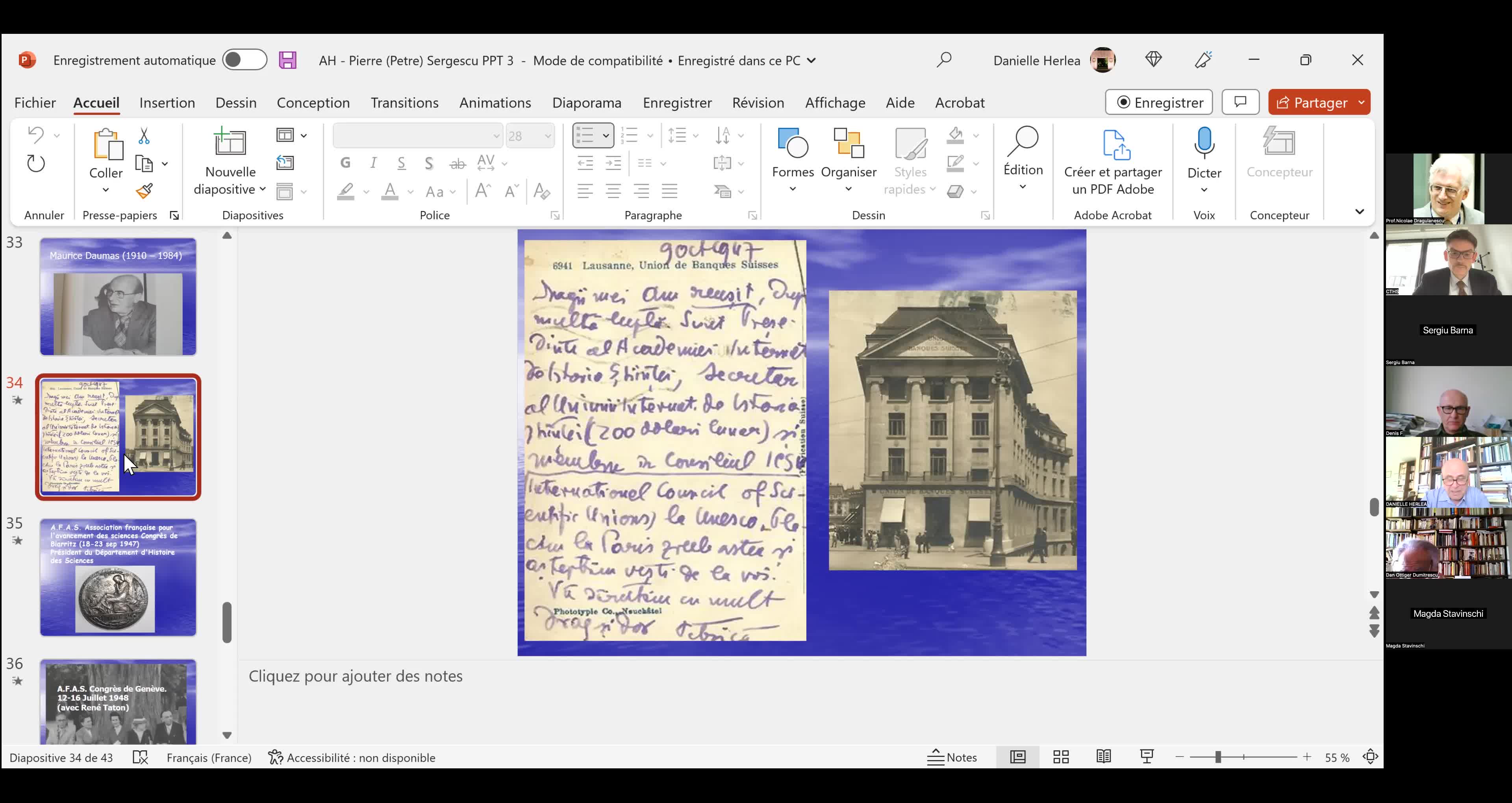Notice
Tatiana Toro - Geometry of measures and applications (Part 5)
- document 1 document 2 document 3
- niveau 1 niveau 2 niveau 3
Descriptif
In the 1920's Besicovitch studied linearly measurable sets in the plane, that is sets with locally finite "length". The basic question he addressed was whether the infinitesimal properties of the "length" of a set E in the plane yield geometric information on E itself. This simple question marks the beginning of the study of the geometry of measures and the associated field known as Geometric Measure Theory (GMT).
In this series of lectures we will present some of the main results in the area concerning the regularity of the support of a measure in terms of the behavior of its density or in terms of its tangent structure. We will discuss applications to PDEs, free boundary regularity problem and harmonic analysis. The aim is that the GMT component of the mini-course will be self contained.
Intervention / Responsable scientifique
Thème
Documentation
Liens
Dans la même collection
-
Giovanni Pisante - Duality approach to a variational problem involving a polyconvex integrand
PisanteGiovanniDuality approach to a variational problem involving a polyconvex integrand
-
Matthias Röger - A curvature energy for bilayer membranes
RögerMatthiasA curvature energy for bilayer membranes
-
Neshan Wickramasereka - Stability in minimal and CMC hypersurfaces
WickramasekaraNeshanindisponible
-
-
-
-
-
Free discontinuity problems and Robin boundary conditions
GiacominiAlessandropar Alessandro Giacomini, université de Brescia
-
-
Gian Paolo Leonardi - Towards a unified theory of surface discretization
LeonardiGian Paoloindisponible
-
-
Camillo De Lellis - Center manifolds and regularity of area-minimizing currents (Part 1)
A celebrated theorem of Almgren shows that every integer rectifiable current which minimizes (locally) the area is a smooth submanifold except for a singular set of codimension at most 2.
Avec les mêmes intervenants et intervenantes
-
Tatiana Toro - Geometry of measures and applications (Part 2)
ToroTatianaIn the 1920's Besicovitch studied linearly measurable sets in the plane, that is sets with locally finite "length". The basic question he addressed was whether the infinitesimal properties of
-
Tatiana Toro - Geometry of measures and applications (Part 3)
ToroTatianaIn the 1920's Besicovitch studied linearly measurable sets in the plane, that is sets with locally finite "length". The basic question he addressed was whether the infinitesimal properties of
-
Tatiana Toro - Geometry of measures and applications (Part 1)
ToroTatianaIn the 1920's Besicovitch studied linearly measurable sets in the plane, that is sets with locally finite "length". The basic question he addressed was whether the infinitesimal properties of
-
Tatiana Toro - Geometry of measures and applications (Part 4)
ToroTatianaIn the 1920's Besicovitch studied linearly measurable sets in the plane, that is sets with locally finite "length". The basic question he addressed was whether the infinitesimal properties of
Sur le même thème
-
Tuan Ta Pesao : écritures de sable et de ficelle à l'Ile d'Ambrym
VandendriesscheEricCe film se déroule au Nord de l’île d’Ambrym, dans l’archipel de Vanuatu, en Mélanésie...
-
"Le mathématicien Petre (Pierre) Sergescu, historien des sciences, personnalité du XXe siècle"
HerléaAlexandreAlexandre HERLEA est membre de la section « Sciences, histoire des sciences et des techniques et archéologie industrielle » du CTHS. Professeur émérite des universités, membre effectif de l'Académie
-
Webinaire sur la rédaction des PGD
LouvetViolaineRédaction des Plans de Gestion de Données (PGD) sous l’angle des besoins de la communauté mathématique.
-
Alexandre Booms : « Usage de matériel pédagogique adapté en géométrie : une transposition à interro…
« Usage de matériel pédagogique adapté en géométrie : une transposition à interroger ». Alexandre Booms, doctorant (Université de Reims Champagne-Ardenne - Cérep UR 4692)
-
D. Semola - Boundary regularity and stability under lower Ricci bounds
SemolaDanieleThe theory of non smooth spaces with lower Ricci Curvature bounds has undergone huge developments in the last thirty years. On the one hand the impetus came from Gromov’s precompactness theorem
-
D. Stern - Harmonic map methods in spectral geometry
SternDanielOver the last fifty years, the problem of finding sharp upper bounds for area-normalized Laplacian eigenvalues on closed surfaces has attracted the attention of many geometers, due in part to
-
P. Burkhardt - Pointwise lower scalar curvature bounds for C0 metrics via regularizing Ricci flow
Burkhardt-GuimPaulaWe propose a class of local definitions of weak lower scalar curvature bounds that is well defined for C0 metrics. We show the following: that our definitions are stable under greater-than-second
-
R. Bamler - Compactness and partial regularity theory of Ricci flows in higher dimensions
BamlerRichard H.We present a new compactness theory of Ricci flows. This theory states that any sequence of Ricci flows that is pointed in an appropriate sense, subsequentially converges to a synthetic flow.
-
C. Li - Classifying sufficiently connected PSC manifolds in 4 and 5 dimensions
LiChaoIn this talk, I will discuss some recent developments on the topology of closed manifolds admitting Riemannian metrics of positive scalar curvature. In particular, we will prove if a closed PSC
-
Y. Lai - A family of 3d steady gradient Ricci solitons that are flying wings
LaiYiWe find a family of 3d steady gradient Ricci solitons that are flying wings. This verifies a conjecture by Hamilton. For a 3d flying wing, we show that the scalar curvature does not vanish at
-
T. Ozuch - Noncollapsed degeneration and desingularization of Einstein 4-manifolds
OzuchTristanWe study the noncollapsed singularity formation of Einstein 4-manifolds. We prove that any smooth Einstein 4-manifold close to a singular one in a mere Gromov-Hausdorff (GH) sense is the result
-
D. Tewodrose - Limits of Riemannian manifolds satisfying a uniform Kato condition
TewodroseDavidPresentation of a joint work with G. Carron and I. Mondello where we study Kato limit spaces.





























